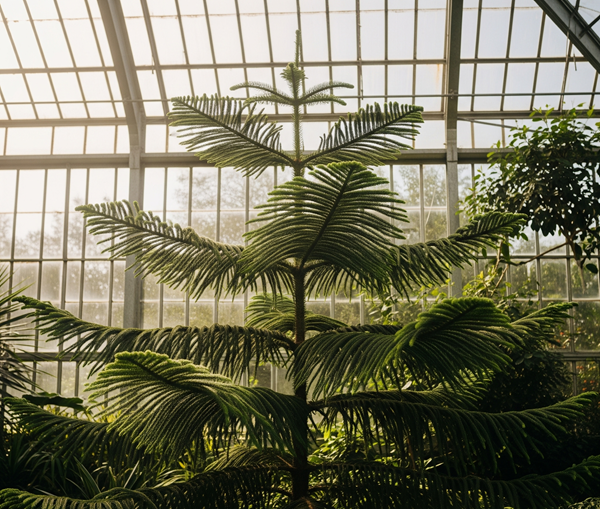
Light Needs: High light with full sun is best, but they can tolerate a less than full sun environment.
Best Temperatures: They can adapt to a range of temperatures between 45-85ºF.
Water and Humidity Needs: Keep the soil evenly moist.
Growing Guidelines: Grow Norfolk Island pine in African violet mix. Fertilize them 4 times per year and repot them every 3 years.
Common Problems: Needles will drop if they are in a hot, dry environment
Propagation: Taking cuttings will ruin the shape of the plant but they can be grown from seed.
Fun Facts
Norfolk Island pine, (Araucaria heterophylla), evergreen timber and ornamental conifer of the family Araucariaceae, native to Norfolk Island, located in the South Pacific Ocean between New Caledonia and New Zealand. The wood of large trees is used in construction, furniture and shipbuilding. The plant is grown as an outdoor ornamental in regions with a Mediterranean climate and the attractive saplings are cultivated throughout the world as houseplants.
The Norfolk Island pine was discovered on the second expedition of Capt. James Cook, who was the first European to see the trees and thought they would make good masts for ships. The British government sent people to live on Norfolk Island in 1788 to make sure that these trees would be kept for use by the Royal Navy. Despite its common name, the plant is not a true pine.
In nature the Norfolk Island pine can grow to a height of 200 feet, with a trunk sometimes reaching 10 feet in diameter. The branches are arranged in symmetric whorls, and the trunks are characteristically straight. The leaves of young plants are needlelike and curve upward to a point, while those of mature trees are scalelike and densely overlapping. The round female cones are spiny and reach up to 6 inches in diameter. An unusual feature of this species is that lateral branches cut from a tree and rooted in soil continue to grow horizontally and never produce an erect stem.
Happily, if a Norfolk Island pine is grown in a greenhouse, you don’t need to worry about it busting through the roof anytime soon as when they are located indoors, they are not fast growers. With good care, over the course of years, they can eventually reach 6 feet tall or more. Scientific research by NASA showed that Norfolk Island pines can remove harmful VOCs (volatile organic compounds) from the air, purifying it and making it safer to breathe.




Comment here